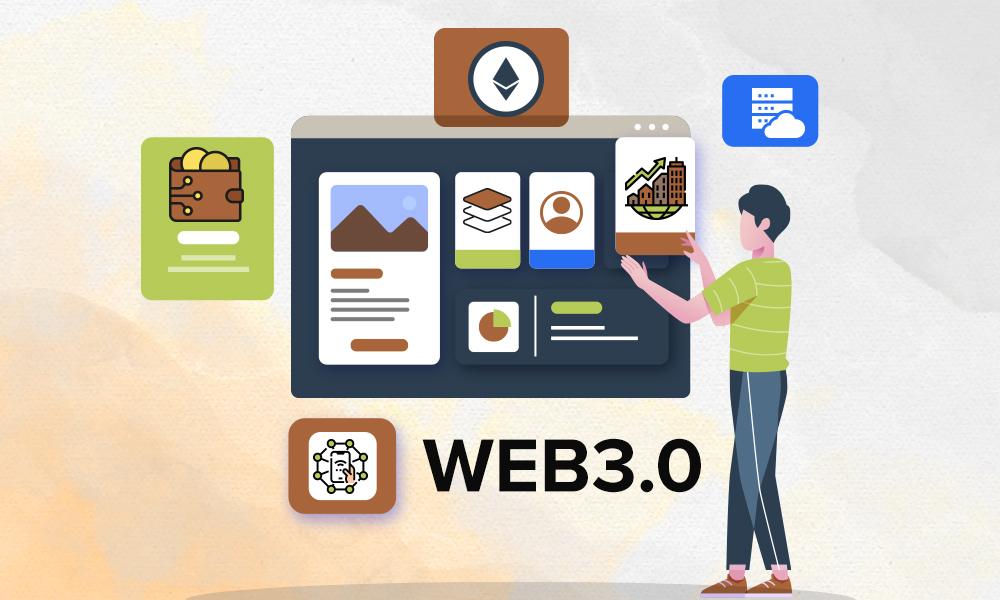We all know how critical ‘websites’ and ‘web apps’ have become for a startup. It is amongst the very first things, which customers land on while interacting with a startup business. But, what we forget to discuss is how complex and time-consuming it can be to get a web project completed in the market.
Every startup needs a website that is easy-to-use, reliable and suits its purpose. It helps them to attract visitors and potential customers to understand the company, product, and benefits through a variety of interactions.
We are here to help startups like you who want a website or a web app to skyrocket their product. We will also tell you how you can excel at the process by following our suggestions. Let us first understand the different stages of web development.
Stages of web development for startups
Goal identification: Every website or application has a goal – branding, selling, providing information, support, or a combination of all. This stage involves identifying the goals, scope, and target audience of the website. It helps the developer to plan further stages of websites development.
Wireframe creation: At this stage, the developer creates the basic wireframe that shows how the app will look like. It is a basic view with limited graphic elements and content. Based on the wireframe, the design and content are created.
Content creation: This stage involves writing compelling content that will help your startup create a brand and communicate with the audience. Content may include services, blogs, landing pages, testimonials, case studies, SEO and more. It can help inform your audience about your product and drive them to buy or subscribe to it.
Designing: This stage involves giving visual appeal to the website by adding colours, icons, buttons, images, and videos. A designer may create a custom style guide or use a pre-built theme to create the design.
Developing and Testing: Once the design and content are ready, a developer starts to build the app. The developer will create the features and functionalities based on the requirements using the wireframe and content provided. After the development work is completed, a tester is appointed to examine if there are any bugs and errors. Testing also ensures that SEO is in place. The aim is to provide a smooth and error-free experience to the user.
Launch: The website or the web app is ready to launch at this stage. A dedicated team will be assigned to monitor the performance and manage the issues. As the business grows, more content and functionalities can be added.

We can provide web development solutions for your startup
How can you be good at ordering a web project?
Now, you are aware of the importance of a web application for a startup and the stages of building one. But do you know how you can get a web project built in a smooth and cost-effective way? How to look for the best company to work for your web project?
Here are some ways you can use to build a website that is user-friendly, reliable and suits your purpose.
Define user personas
A ‘user persona’ is a fictitious character that can represent different types of people that visit your website. Defining user personas can help you see your website through the eyes of your customers. While creating a persona, you need to answer a few questions:
- What do they do?
- Where do they live?
- What level of education do they have?
- Which social media platforms do they use?
- What is their job?
- What are their challenges?
- Which work tools do they use?
- What are their goals and what motivates them?
- What do they search online?
Creating a persona can help you create content that is more targeted to your customers and speaks directly to them. By doing this effectively, there will be a better chance that they will click on the call-to-action buttons and buy your product.
Here you can create your buyer persona.
Choose the right platform/technology
Here are five basic steps that can help you choose a tech partner for your startup.
Selecting the right platform/technology is a crucial step in the project lifecycle. It can impact your project’s time to market, cost, performance, and overall maintenance.
At this stage, you need to decide whether you want to go with a content management system (CMS) or an HTML-based website.
Choosing a CMS like WordPress, Joomla, or Shopify can give certain advantages:
- Edit or manage content without in-depth knowledge of web programming
- Ready elements to add or remove functionalities
- Ability to use design templates
- Can be cost-effective as less time and effort are required
HTML websites have their own set of benefits:
- Complete flexibility
- Fully customizable
- Undemanding to resources
- No cost of a CMS involved
In the case of complex web applications, choosing the right technology stack can be tough. A tech stack combines two parts – front-end (client-side) and back-end (server-side). As a startup, you need to analyze your requirements, scale and budget of the project, time to market and development cost before finalizing the tech stack.
Want to know how blockchain can empower your startup idea?
Adopt Agile Methodology
Agile methodology refers to a method of development that focuses on iterative development. Instead of getting everything done in one go, the agile approach helps teams deliver work in small increments with continuous evaluations.
Adopting agile practices can be transformative for the IT team, management processes, and enterprise as a whole as it offers increased transparency and visibility. At Akeo, we focus on the ‘iterative approach’ to deliver small, rapid releases of products in response to customer feedback. Know more about Akeo using Agile methodologies.
Find the right partner
Finding the right partner for your web project can be tough. It must align with your values and vision and provide the required technical assistance at your budget.
A good tech partner to help you with your web project should have:
- Experience with web development.
- The expertise of the platform/technology you have chosen.
- Provide a dedicated team to manage your web project.
- Provide long-term support to ensure a bug-free experience for your users.
- Should fulfil all the requirements at your budget.
Conclusion
Every startup today wants an online presence. Websites and web apps are a great way to provide a service and build a brand amongst the customers.
Following this guide can help you understand the ins and outs of web app development. It can also help you find the right company to build your web project.
Have more questions? You can reach us for more information about web app development.




